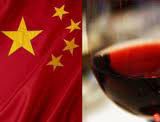
China’s fast evolving taste for wine
Younger Chinese consumers are radically reshaping China’s wine market as trends paralleling those in the West gain ground, but with greater speed.
This was one of the takeaway messages from the inaugural World Bulk Wine Exhibition in Yantai, where a series of seminars and speakers outlined a growing shift towards fresher, lighter styles of wine, including white and sparkling, driven in part by a strong belief in a connection between wine consumption and health.
“Younger consumers, those born in the 1990s, have emerged as a new force for wine consumption,” said Natalia Posadas-Dickson, WBWE conference programme director.
She added that while this generation is not spending as much as its older counterparts, they are more willing to spend more on wine, with growth in spend “very high when compared with previous generations”.
Moreover, these younger consumers are reshaping the Chinese wine market in terms of what styles and categories will come to the fore in the near future – essentially moving beyond from big red styles - and this is happening faster than concurrent trends in the West.
A recent IWSR/Vinexpo report backs this up, showing that while red wine still accounts for 89% of wine consumption, white, at 9%, is rising, along with sparkling wine, which is on course (from a small 1% base) to almost double sales between 2016 and 2020, with rosé also in growth.
And with the reds, lighter, fresher, brighter fruit driven styles, with less or no oak, are the styles being embraced by both younger and an increasing number of older consumers.
Chinese-produced Marselan is a good example, enjoying something of a moment as a fashionable and potential ‘signature’ domestic grape, with fruit-forward, unoaked styles a hit with consumers.
Health considerations play a big part in this reshaping of the drinking topography. According to a recent survey by the Hong Kong Trade & Development Council, some 77% of Chinese consumers drink wine for ‘health reasons’, with this prevalent across all age groups, but highest (84%) among 31 to 40 year olds.
This, in turn, says the report, means that producers looking to tap into to China need to consider cues with strong engagement, such as organic or bio, natural and general good sustainability credentials. The trend to fresher styles of wine, also compatible with a broader range of Chinese cuisines, segues with these sustainable considerations.
“If you are looking to gap into China, you have to pay attention to this demographic and be more receptive to different categories of wine,” said Posadas-Dickson, explaining how to better reach the younger consumers that are increasingly driving the market in China.
Keywords:
- China
- consumption
- health
- trends
- younger consumers
- WBWE
- World Bulk Wine Exhibition
- Chinese market
- lighter styles




